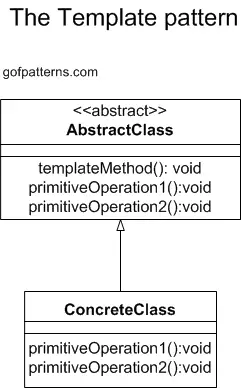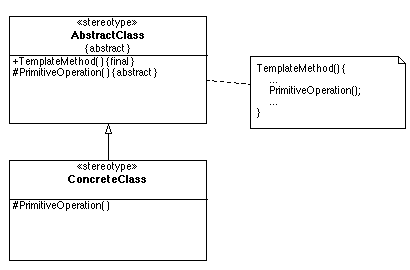Deciphering the Template Pattern: Behavioral Design Patterns' Hidden Framework
In the intricate world of software design, patterns aren't just recurring solutions to problems; they are the very scaffolding upon which robust software stands. Tucked within the vast tapestry of behavioral design patterns, the Template Pattern stands out, not for its flamboyance, but for its intrinsic ability to set the stage for others.
Defining the Protagonist
The Template Pattern is akin to a playwright providing a script but leaving specific scenes open-ended for actors to improvise. In more technical terms, it defines the program skeleton of an algorithm in an algorithm-specific method, but delays some steps to subclasses. The overarching structure remains consistent, but the individual steps can be redefined by derived classes.
Its Notable Components
Its Notable Components
- Abstract Class: This contains the template method and defines abstract primitive operations that concrete subclasses must implement.
- Concrete Classes: Implementations of the abstract class that override the abstract operations to carry out subclass-specific steps.
Why the Buzz Around the Template Pattern?
- Codified Consistency: The Template Pattern ensures that the algorithm's structure remains unchanged, while providing flexibility in its individual steps.
- Reusability and Extension: This pattern promotes code reuse and provides a clear framework for extension. Instead of rewriting an entire algorithm, one simply extends the abstract class and provides a new implementation for the required steps.
- Inversion of Control: Control is inverted, with the parent class dictating the flow, and the derived classes filling in the specifics.
This 'Hollywood Principle' of "Don't call us, we'll call you" ensures a clear division of responsibilities.
A Glimpse into Real-World Application
Imagine a coffee shop that serves various caffeinated beverages. While the process to brew coffee and tea might have similarities (like boiling water), specific steps like steeping tea leaves or brewing coffee grounds differ. The Template Pattern would define the general steps of making a beverage in the abstract class, leaving the specific steps of brewing or steeping to the concrete subclasses.
How Does It Stack Up Among its Peers?
In the continuum of behavioral design patterns, while strategies might dictate interchangeable behaviors and observers facilitate communication, the Template Pattern quietly, yet authoritatively, sets the stage. It doesn't just dictate how objects interact, but meticulously choreographs a consistent dance, with enough freedom for individual flourishes.
A Few Caveats While the pattern offers elegance, one must be wary of excessive subclassing. Over-complication can arise if too many individual steps are abstracted out, leading to a convoluted maze of subclasses.
The Template Pattern, in the theater of behavioral design patterns, is less the leading actor and more the director. It sets the scene, determines the flow, and provides a reliable framework within which individual objects can shine. In a domain where consistency is as crucial as flexibility, the Template Pattern's understated brilliance is, without a doubt, a force to be reckoned with.
A Few Caveats While the pattern offers elegance, one must be wary of excessive subclassing. Over-complication can arise if too many individual steps are abstracted out, leading to a convoluted maze of subclasses.
The Template Pattern, in the theater of behavioral design patterns, is less the leading actor and more the director. It sets the scene, determines the flow, and provides a reliable framework within which individual objects can shine. In a domain where consistency is as crucial as flexibility, the Template Pattern's understated brilliance is, without a doubt, a force to be reckoned with.
The Template Method pattern provides a method that allows subclasses to override parts of the method without rewriting it. Define the skeleton of an algorithm in an operation, deferring some steps to subclasses. Template method lets subclasses redefine certain steps of an algorithm without changing the structure of the algorithm. The figure below illustrates the Template pattern.

Benefits of the Template Pattern:
The following lists the benefits of using the Template pattern:
- Fundamental technique for reusing code
When to Use the Template Pattern::
You should use the Template pattern when:
- You want to implement the invariant parts of an algorithm once and use subclasses to implement the behavior that can vary.
- When common behavior among subclasses should be factored and localized in a common class to avoid code duplication.

When there is an algorithm that could be implemented in multiple ways, the template pattern enables keeping the outline of the algorithm in a separate method (Template Method) inside a class (Template Class),
leaving out the specific implementations of this algorithm to different subclasses. In other words, the Template Method pattern is used to keep the invariant part of the functionality in one place and allow the subclasses to provide the implementation of the variant part.